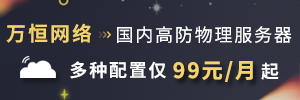Python学习笔记基本数据结构之序列类型list tuple range用法分析

本文实例讲述了Python学习笔记基本数据结构之序列类型list tuple range用法。分享给大家供大家参考,具体如下:
list 和 tuple
- list:列表,由 [] 标识; 有序;可改变列表元素
- tuple:元组,由 () 标识; 有序;不可改变元组元素(和list的主要区别)
list 和 tuple 的创建:
1 2 3 4 5 6 7 8 9 | print([]) # 空listprint(["a",1,True]) # 元素类型不限print([x for x in range(0,6)]) # 列表推导式print(list("a"),type(list("a"))) # 强制转化print(()) # 空tupleprint((1)) # 不是tupleprint((1,)) # 单一元素tuple 一定要加,print(("a",1,True)) # 元素类型不限print(tuple("a"),type(tuple("a"))) # 强制转化 |
空list l = []
list 用一对方括号,用','隔开里面的元素 l = [a] l = ["a",1,True] 元素类型不限
列表推导式,如:[x for x in range(0,6)] (下方会详细介绍 range 及 列表推导式)
类型转换 list()
空tuple t = ()
tuple 若只有一个元素时,注意表示为 t = (1,) 一定要有逗号
tuple 用一对圆括号,用','隔开里面多个的元素 t = ("a",1,True) 元素类型不限
类型转换 tuple()
range
range 可方便的生成一个等差的序列,有两种表示 range(stop) 、range(start, stop[, step]) ; 通常用在 for循环语句中
range(stop) 表示 0 到 stop(不包含stop) 等差为1 的数,如 range(4) 表示 0 1 2 3
range(start, stop[, step]) 表示 从 start 到 stop(不包含stop) 等差为step的数;step缺省为1,可设置为负数
1 2 3 4 5 6 7 8 9 10 11 | print(type(range(4))) # range本身就是一个typefor i in range(4): print(i) # 0 1 2 3for i in range(-1): # 从0计数,无值 print(i)for i in range(4,7): # 4 5 6 print(i)for i in range(2,7,2): # 2 4 6 print(i)for i in range(5,2,-1): # 5 4 3 print(i) |
序列操作
一般操作,不改变list本身
| Operation | Result |
|---|---|
| x in s | True if an item of s is equal to x, else False |
| x not in s | False if an item of s is equal to x, else True |
| s + t | the concatenation of s and t |
| s * n or n * s | n shallow copies of s concatenated |
| s[i] | ith item of s, origin 0 |
| s[i:j] | slice of s from i to j |
| s[i:j:k] | slice of s from i to j with step k |
| len(s) | length of s |
| min(s) | smallest item of s |
| max(s) | largest item of s |
| s.index(x[, i[, j]]) | index of the first occurrence of x in s (at or after index i and before index j) |
| s.count(x) | total number of occurrences of x in s |
1 2 3 4 5 6 7 8 9 10 11 12 13 14 15 16 17 18 19 20 21 22 23 24 25 26 27 28 29 30 | s = ["a",1,True,["b"],2] print("a" in s) # 判断元素存在于sprint("a" not in s) # 判断元素不存在于sprint("b" in s)print(1.0 in s) # 这边不判断int float类型不同print("1" in s) # 这边的1为字符串a = [1,2]b = [2,1,0]print(a+b) # 序列相加print(a*3) # 序列乘法s = [0,1.0,2,3,4,5,6,7,8] print(s[0],s[2],s[3]) # 通过下标来取出对应的元素print(type(s[0])) print(type(s[1]))print(s[2:4]) # 取出一段listprint(s[2:7:2]) # 根据步长取出一段listprint(len(s)) # list长度,即包含几个元素sum = 0 for i in range(0,len(s)): # 使用for循环来取出list的每个元素 print(s[i]) sum += i # 赋值的简单表达式,相当于 sum = sum + iprint(sum) # 总和print(min(s),max(s)) # 取最小/最大;注意元素类型间若不可比较,会报错s = [2,3,1,2,2,3]print(s.index(2)) # 查找对应元素第一次出现的下标# print(s.index(4)) # 不存在该元素会报错print(s.index(2,3)) # 从下标为3的开始找起print(s.index(2,3,4)) # 从下标为3到下标4的阶段内找print(s.count(2)) # 输出为2的元素的个数print(s.count("2")) # 找不到匹配元素,返回0 |
上方列出的操作方法对 tuple 也都适用,因为并不改变序列本身的元素,如
改变序列的操作:仅对 list 适用;若对 tuple 操作,会报错;clear() 和 copy() 是 Python 3.3 才新增的方法
| Operation | Result |
|---|---|
| s[i] = x | item i of s is replaced by x |
| s[i:j] = t | slice of s from i to j is replaced by the contents of the iterable t |
| s[i:j:k] = t | the elements of s[i:j:k] are replaced by those of t |
| del s[i:j] | same as s[i:j] = [] |
| del s[i:j:k] | removes the elements of s[i:j:k] from the list |
| s.pop([i]) | retrieves the item at i and also removes it from s |
| s.remove(x) | remove the first item from s where s[i] == x |
| s.clear() | removes all items from s (same as del s[:]) |
| s.append(x) | appends x to the end of the sequence (same as s[len(s):len(s)] = [x]) |
| s.extend(t) | extends s with the contents of t (same as s[len(s):len(s)] = t) |
| s.insert(i, x) | inserts x into s at the index given by i (same as s[i:i] = [x]) |
| s.copy() | creates a shallow copy of s (same as s[:]) |
| s.reverse() | reverses the items of s in place |
list的增、删、改的操作实际都比较实用,需要熟练掌握
list元素更改
可对 list 不同的下标表示法做以下操作,一般 list 下标的操作仅作对单一元素的更改赋值,如 s[0]=1 ;对多个元素的操作见下方示例(仅供参考)
1 2 3 4 5 6 7 8 9 10 11 12 13 14 15 16 17 18 | s = [0,1,2,3]s[0] = "1"print(s) # 对list的某一元素赋另外的值,类型也跟随改变s[4] = 1 # 不可超过原list的长度,会报错s[0:3] = [2,3,4] # 可对一段元素赋另外的值print(s) s[0:3] = ["x","x"] # 可缺少,元素个数也就相应的减少了print(s) s[0:2] = ["x","x","x","x"] # 可增加,元素个数也就相应的减加了print(s) s[0] = [0,0] # 单个元素注意,相当于赋值,把序列赋予该元素print(s) s[1:2] = [0,0] print(s) s = [0,1,2,3,4,5,6,7,8]s[1:8:2] = ["x"]*4 # s[1:8:2] = ["x"]*3 # 这种表示方式元素个数一定需要相同,不然会报错print(s) |
list元素删除
1 2 3 4 5 6 7 8 9 10 11 12 13 14 15 | s = [0,1,2,3,4,5,6,7,8]del s[0:4] # 删除对应的元素 print(s) s = [0,1,2,3,4,5,6,7,8]del s[1:8:2] # 做删除print(s)s = [0,1,2,3,4,5,6,7,8]s.pop(3)print(s.pop(3),s) # 做删除,并且返回该元素的值print(s.pop(),s) # 默认删除最后一个s = [2,"1",1.0,1,2,1]s.remove(1) # 删除第一个值为 1 的元素print(s) s.clear() # 置空,Python3.3引入print(s) |
list元素增加
1 2 3 4 5 6 7 8 9 | s = [0,1,2,3,4]s.append(5) # list 最后加一个元素print(s)s.extend([6,7]) # list 最后拼接序列print(s)s.extend(range(3))print(s)s.insert(1,["x"]) # 在1的位置插入["x"]print(s) |
其他操作,reverse、copy 等
1 2 3 4 5 6 7 8 9 10 11 12 | s = [1,2,3]c = s.copy() # 相当于 c = sprint(c)c.reverse()print(c)s = [2,3,1,4]s.sort() # 排序print(s)# s = ["b",1,"a",True] # 报错,必须是可比较的类型s = ["b","a"]s.sort() print(s) |
更多关于Python相关内容感兴趣的读者可查看本站专题:《Python数据结构与算法教程》、《Python函数使用技巧总结》、《Python字符串操作技巧汇总》、《Python入门与进阶经典教程》及《Python文件与目录操作技巧汇总》
希望本文所述对大家Python程序设计有所帮助。

微信公众号搜索 “ 脚本之家 ” ,选择关注
程序猿的那些事、送书等活动等着你
本文来自互联网用户投稿,该文观点仅代表作者本人,不代表本站立场。本站仅提供信息存储空间服务,不拥有所有权,不承担相关法律责任。
如若内容造成侵权/违法违规/事实不符,请将相关资料发送至 reterry123@163.com 进行投诉反馈,一经查实,立即处理!
相关文章

Python Opencv中用compareHist函数进行直方图比较对比图片
这篇文章主要介绍了Python Opencv中用compareHist函数进行直方图比较进行对比图片,本文通过实例代码给大家介绍的非常详细,对大家的学习或工作具有一定的参考借鉴价值,需要的朋友可以参考下2020-04-04





































最新评论